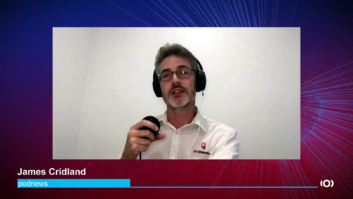
We haven’t visited the Radio World radio bookshelf in a while!
How would you go about explaining to a non-engineer the technical concepts that might arise when working at a radio station, TV station or other digital media facility? “A Broadcast Engineering Tutorial for Non-Engineers” is most helpful.
The fourth edition is a 360-page paperback published by Focal Press and the NAB, and it seems more comprehensive and well thought out than I recall from earlier versions. Its content is broken down logically into discussions about broadcasting basics; studios, production and playout facilities; and transmission standards and systems.
Much about our media technology world has changed in the nine years since the previous edition; so the authors include topics like next-generation radio, “hybrid” broadcasting, IP-based content production, HDTV and “over the top” TV, mobile apps and so forth. Yet they don’t stint on the ABCs.
The authors are Skip Pizzi, senior director of new media technologies at NAB, a veteran trainer-and-explainer of technical concepts and a former RW contributor; and Graham Jones, former NAB senior director working on advanced television issues.
They provide readers a broad survey via digestible explanations rather than deep dives. So the next time a reasonably intelligent, non-technical colleague asks you to explain Program and Service Data, transmitter remote control, radio automation, EAS or audio over IP, hand them this book.
Price: $44.95. Find it at www.focalpress.com.
***
Anxiety! Ignorance! Hubris! If you like your summer reading hot, John Nathan Anderson has a topic for you: HD Radio. He attacks his subject, almost literally (using words like those above), in “Radio’s Digital Dilemma: Broadcasting in the Twenty-First Century,” published by Routledge.
The author is an assistant professor and director of broadcast journalism in the Department of Television and Radio at Brooklyn College, City University of New York, and a former radio journalist. As he sees it, HD Radio “pitted the nation’s largest commercial and public broadcasters against the rest of the radio industry and the listening public in a pitched battle over defining the digital future of the medium.”
The FCC, he writes in the introduction, put its faith in market forces to govern our digital transition. “But this has not been a winning strategy: a dozen years from its rollout, the state of HD Radio is one of dangerous malaise, especially as newer digital audio distribution technologies fundamentally redefine the public identity of ‘radio’ itself.”

Begun as a doctoral dissertation, the book is essentially an extended essay on the history of HD Radio with Anderson’s pungent commentary. Anyone who has followed the debate in our pages will find this 188-page hardback thought-provoking. (Indeed, Anderson frequently cites articles in Radio World and other industry publications to assess pro-and-con industry sentiment; and he quotes RW and my own columns extensively, though we had no involvement in the book.)
The book is pricy at $125, though this is not unusual for academic works of its kind. See www.routledge.com or try online book vendors, which often carry discounts.
In an interview published on Routledge’s website, Anderson adds that radio studies in general have been “grossly neglected” by scholars, though he senses a resurgence of interest in recent years. “I’m hoping that my work may spark some debate and perhaps inspire others to take a closer look at broadcasting, its structure and its values,” he said then.
***
And I can hardly write a book column without mentioning Arcadia Publishing’s regional radio series, part of its “Images of America” lineup.
“Capital Region Radio 1920–2011” was written by cousins John Gabriel and Rick Kelly, natives of the region. “Capital Region” here refers to the New York capital of Albany and surrounding Hudson Valley area, notably the towns of Schenectady and Troy.

As our Gear & Technology Editor Brett Moss noted in a recent blog post, that area has a deep radio history thanks to the presence of a General Electric facility that became involved in the early radio broadcast industry. With GE leading the way and providing facilities, WGY, one of the first major stations, was born. Under the early guidance of Kolin Hager, the station was a pioneer in programming and broadcasting practices such as remotes; and it could operate as a test bed for new equipment.
The book is particularly strong on the top 40 era when WTRY, WPTR and others battled it out for music supremacy and names such as “Boom Boom” Brannigan, Rick Snyder, Jay Clark, Dan Martin, Lee Gray and Joe Condon rode the air. The authors acknowledge that those were the years they were growing up, listening to and falling in love with radio.
“Capital Region Radio 1920–2011” is from Arcadia Publishing and lists for $21.99. It also features one of my favorite book covers of all time. Woof!











